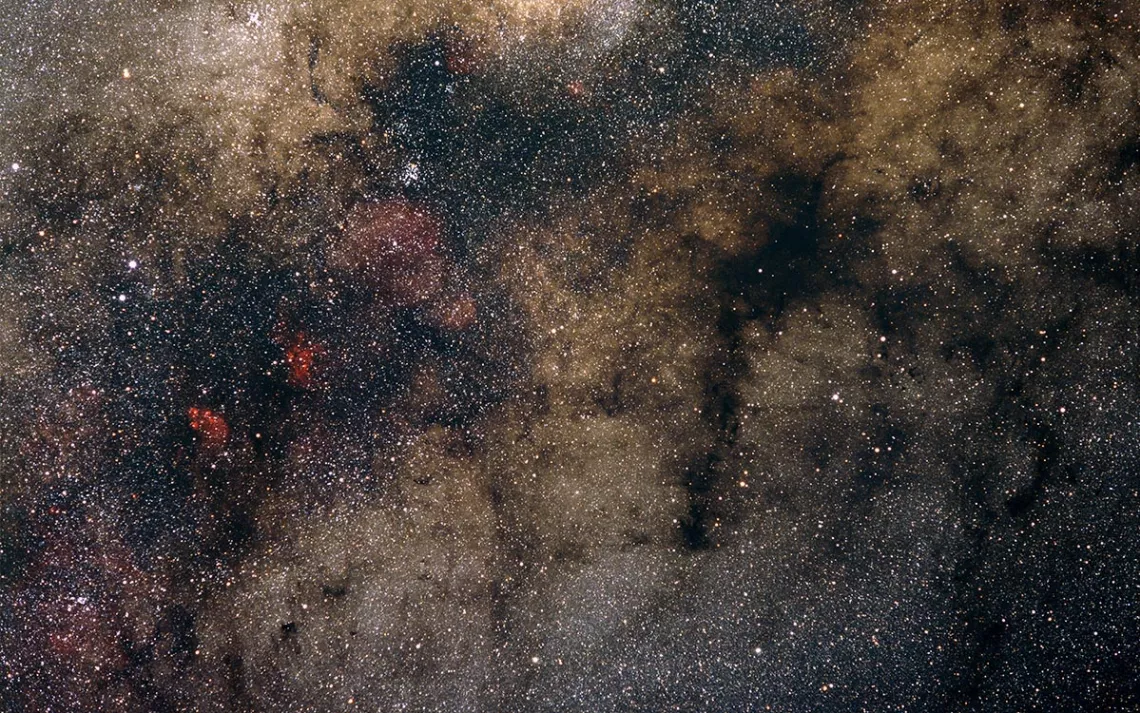August Astronomical Highlights: The Middle of the Galaxy
The Milky Way gets centered this month

Photo by australis/iStock
The summer months give viewers an opportunity to see a normally hidden region of the sky. Constellations such as Scorpius and Sagittarius skim the southern horizon and are filled with star clusters and nebulae thanks to their location near the center of the Milky Way. A quick way to spot this part of the sky is to find the two bright “stars,”—actually Jupiter and Saturn—which are currently hugging our galaxy.
As your eyes adjust to the dark, and the hazy stretch of the Milky Way becomes clear, look for stars that form the shape of a teapot. This asterism is part of the constellation Sagittarius. With binoculars or a telescope, scan the clouds above the teapot to find a variety of star clusters and gaseous nebulae. The Sagittarius Star Cloud can be found here—it contains the densest concentration of individual stars visible through binoculars, with up to 1,000 appearing in the field of view.
Saturn lies to one side of the Milky Way in Sagittarius during August, and Jupiter is on the other side, in the constellation Ophiuchus, just above Scorpius. On August 9, the moon lies close to Jupiter, and by August 11, it has crossed the Milky Way to take up close quarters by Saturn. Perseids, the most-watched meteor shower of the year, occurs in August, although this year the full moon, which falls on August 15 at 5:29 A.M. PDT, spoils the shower’s peak on August 11 and 12. But the shower’s meteors can be spotted any time between July 13 and August 26, so you’ll still have a chance to see some before and after the full moon.
If you see a meteor in August, trace it back to where it seems to have originated, which should be around the constellation Perseus. Rising above the northeastern horizon in the late evening, Perseus is known for some pretty star clusters, from the large and bright but diffuse Alpha Persei Cluster to the Double Cluster, a fabulous pair of star clusters that pop into view when you focus a pair of binoculars on them.
The Double Cluster (NGC 884/869) is a pair of 4th-magnitude open star clusters, also known as h (869) and chi (884) Persei, each about a half degree across. They lie 7,400 light-years away from Earth and are about 100 light-years apart from each other in the Perseus spiral arm of the Milky Way galaxy. Earth lies there too—or to be exact, in a local spur of that arm called the Orion-Cygnus Arm. (The other major spiral arm of the Milky Way galaxy is the Scutum-Centaurus Arm.)
H (869) and chi (884) Persei are quite young—only a few million years old. With a couple of hundred stars within each, they can be seen with the naked eye but really shine under magnification. The brightest stars in the clusters are all supergiants.
 The Magazine of The Sierra Club
The Magazine of The Sierra Club







